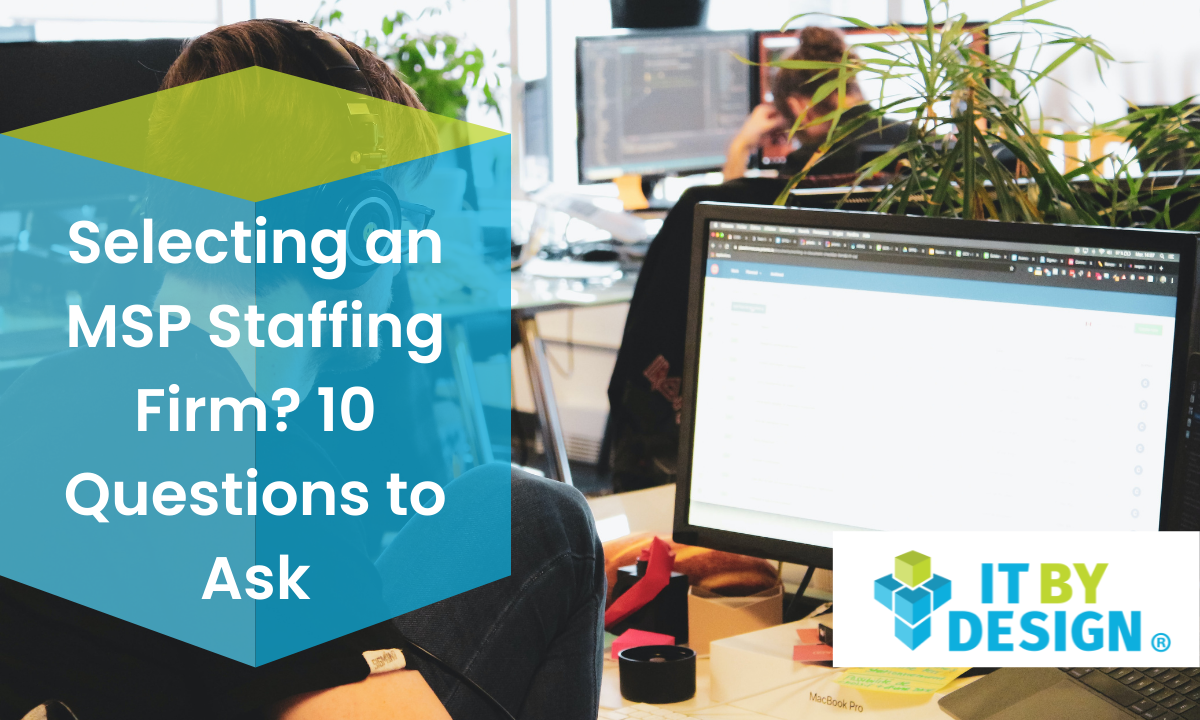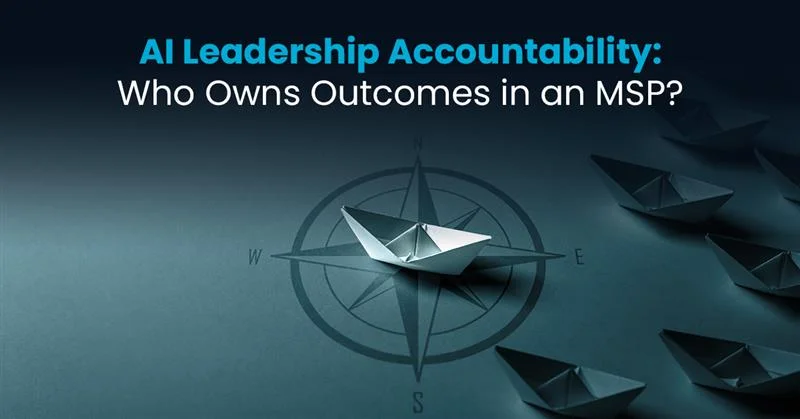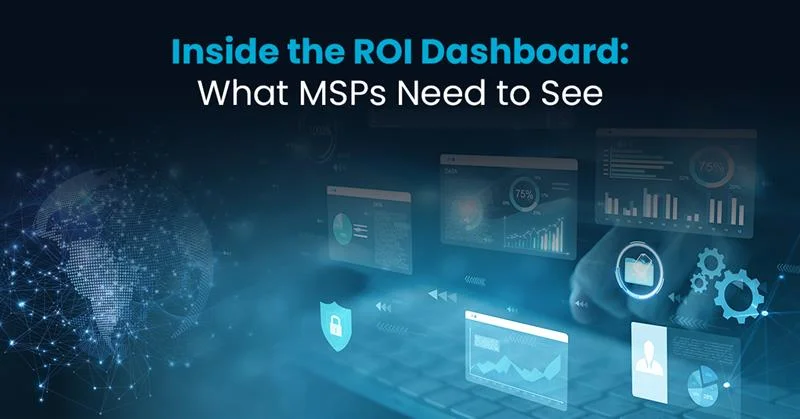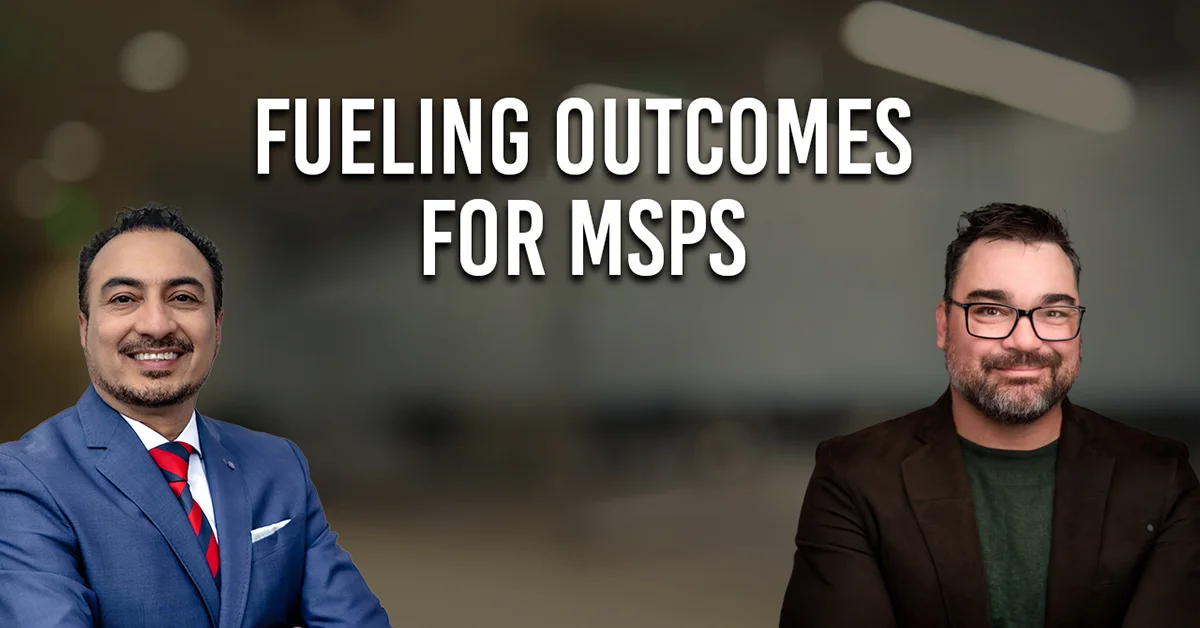If you’re a growing MSP, you may one day suddenly realize that you need more resources to deliver on your customer promise. If you need extra hands on the desk, one option that doesn’t require you to invest time or money into recruiting new talent is partnering with a provider for remote staffing solutions.
The premise of MSP staffing is straightforward: businesses that serve as “matchmakers” bring you the tech talent you need. However, choosing the wrong remote staffing provider can lead to serious complications. You could be locked into an expensive multi-year contract that doesn’t fit your business needs or you may end up suffering cyberattacks, data loss, and unexpected downtime because of a lack of security. Taking the time to properly vet your MSP staffing partner can help you avoid these missteps—each with tremendous potential to damage your business and its reputation.
1. Do you have an onboarding plan?
Onboarding is an essential stage of client acquisition. Expectations, communication, checklists, and articulated plans around technology, security, HR, and more are all part of a successful client onboarding process. The smallest mistake during this stage can lead to bigger issues over the long term. Start your search for a staffing partner by asking for, and then evaluating a well-defined onboarding process.
Since every client does not have the same requirements, the onboarding checklist should cover a wide range of potential scenarios. The process should go like this:
- Begin with a welcome document containing a description of the provisioning process, an introduction to service offerings, a clear explanation of contact and escalation points, and other useful reads or links.
- Multiple meetings with each team involved in client satisfaction should be hosted to clearly understand the client’s unique requirements.
- Schedule quality check/assessments and ongoing reporting.
- Set expectations for successfully understanding each team’s roles and responsibilities.
2. How do you match specific talent needs? What’s your competency mapping process?
Competency mapping, the process of identifying MSP engineers’ specific skills, abilities, knowledge, and behaviors, is required to effectively and efficiently place staffing within the MSP space. By evaluating the suitability of each engineer for each identified role, the staffing services provider can better align both hard and soft skills with each customer’s needs.
Then the staffing services provider should ask you to choose from a pool of engineers that match your needs. You must have a hands-on role in the process, participating in multiple virtual interviews with prospective candidates, asking for additional candidates based on your feedback, and assessing them to validate their experience. Once you identify the right match, the hired engineer(s) should be able to work with your team as early as the next day.
3. What hours are engineers available?
What are their shift schedules? Many remote staffing providers only offer 9-5, Monday-Friday. More often than not, they favor extending the support window, but simply don’t have the bandwidth or internal resources to pull it off. If you have clients based across multiple time zones or overseas, make sure you are evaluating staffing services providers that offer 24x7x365 support. Otherwise, downtime, loss of productivity, and lack of response can irritate your clients when an outage occurs over the weekend or after-hours and isn’t identified, acknowledged, or resolved until Monday morning. Additionally, make sure the staffing provider offers engineers that monitor your key server and applications around the clock and look for common disruptions and issues.
4. Do you have contracts and bonds in place for engineers?
Ideally, the staffing provider should have a robust employee retention strategy. This strategy, to retain engineers, should revolve around offering salary and benefits as per industry norms, developing attractive workplace culture, and nurturing strong employer-employee relations. Some providers, as part of their hiring process, even include a contract that outlines all of the particulars to ensure no “unplanned exits.”
If a dedicated MSP engineer chooses to move on due to special circumstances, the staffing provider must be able to offer an immediate replacement. Also, if communication, performance, and skill-set-related issues arise, you should be able to contact an assigned service manager for another trained engineer the very next day. One of the key advantages of outsourced staffing is access to trained, skilled talent as needed.
5. What about MSP-specific training and ongoing training?
It’s not enough for a potential staffing partner to have a readily available pool of university-educated tech talent. Each engineer should have a strong set of the right tech expertise and also possess the appropriate soft skills. They should be trained in MSP tools specifically, such as PSAs, RMMs, plus cloud, security, and backup technologies and processes. That doesn’t mean a day or two of classes; a staffing services provider should have a deep understanding of the unique aspects of the MSP business model, and each engineer should as well.
It’s essential a provider invests the time to ensure every engineer thoroughly understands the MSP business model, training them extensively about ticket lifecycles, dispatch, time entries, escalation workflows, service level agreement (SLA) management, email etiquette, and customer service.
The initial deep dive into MSP technology and soft skills isn’t enough; it must translate into a continuous training schedule once the engineer gets contractually engaged with the client. The training should focus on relationship-problem management over ticket management. If the hired engineer is used in a customer-facing role by the client, communication training would help as well. And, obviously, as technology evolves, each engineer should be kept updated on those changes.
6. How is their performance measured?
To ensure engineers align with your MSP’s vision, your staffing partner should benchmark productivity, report on efficiencies, and track development. Integrating technical expertise with your common business goals is an essential step to getting the best value from your staffing solution. The staffing services provider and you should work together to determine key performance indicators (KPIs) for each engineer apart from daily discipline around time cards, attendance, and other business courtesies.
7. What are the provisions to improve the escalation rate?
Some aspects of staffing are given: engineers must complete work on time, manage, and set priorities correctly. Quality of work shouldn’t suffer to meet deadlines. But many staffing services providers leave enforcement to their clients rather than building clear processes with engineers before they ever join a customer’s team. That should include daily, brief meetings with placed engineers to discover challenges and training needs, and to keep a finger on the pulse of the partnership.
From there, each placed engineer should have technical leads within the staffing provider who serve as an immediate point of contact for sharing concerns, communicating bigger issues, and seeking quick resolution. Not only should the customer have clear lines of communication with each staffed engineer, but also with that technical lead. Additionally, you should have the contacts needed to escalate any questions or concerns quickly up to management in the services provider.
8. What about non-billable resources?
When you sign SLA for an engineer, you should also be signing up for other resources associated with this tech talent, including an onboarding manager, project manager, and service delivery manager. You may often need to interact with them for escalation and quick resolution of problems or questions, even new ideas about potential uses for your staffing resource. Be sure there is a plan for you to meet (even virtually) with everybody associated with your account before signing the contract.
As a best practice, during an initial introductory call with this team, you should set clear expectations with each team member associated with your account. This will streamline all communication.
9. What does the learning and development (L&D) for talent retention look like?
To have (and keep) a happy, productive remote engineer as part of your team, you should expect your staffing service provider to have individualized career development plans for each talent asset. With MSPs becoming more specialized and requiring advanced technical acumen, skills development has taken on an even more critical role. The MSP staffing partner you are opting for should be able to clearly explain how it plans to upgrade its engineers’ skills over time.
10. Do you have a formalized renewal process?
Questions such as “What is going to happen after a year if I like the engineer?” should be dealt with early on. Your staffing provider’s SLA should cover renewal provisions, which can vary widely. To alleviate friction over renewals and other details, choose a staffing service provider that has contract management in place; ideally, an enterprise application that maintains all clients’ annual maintenance contracts, monitors the renewal dates, and automates the process for both parties.
Leveraging a staffing services provider can give you affordable, well-skilled talent that’s perfect for your business without the payroll and HR complications. However, choosing that staffing partner should be a thorough and thoughtful process because you are truly “hiring” the entire company when you contract for an engineer or other resource.








